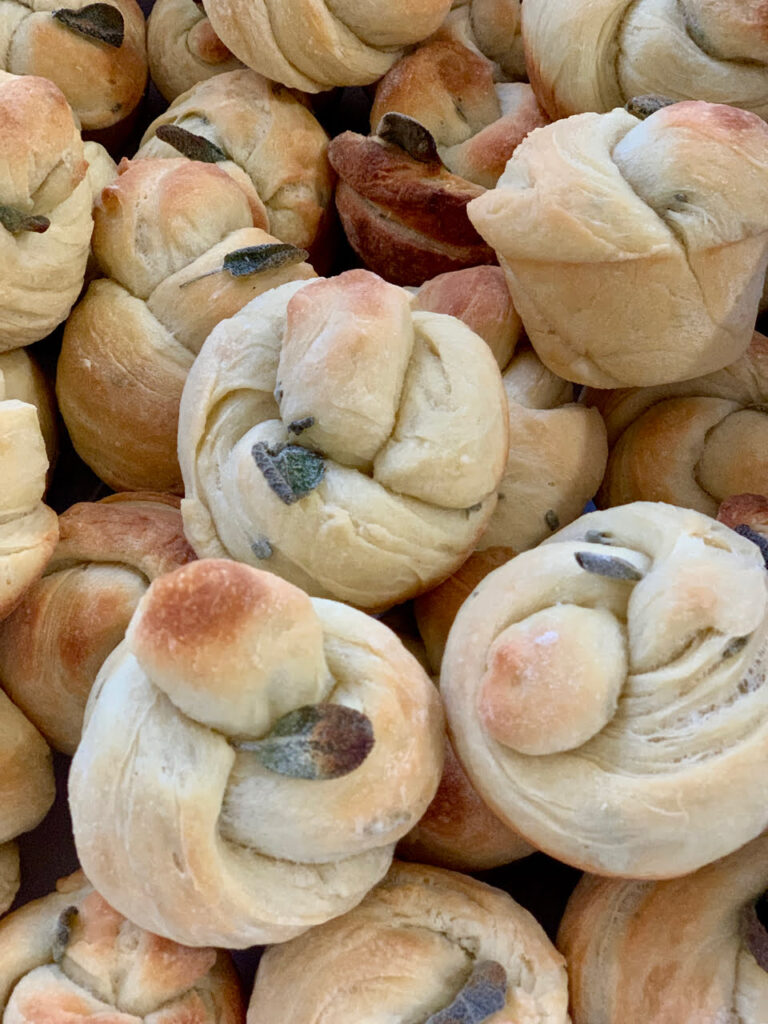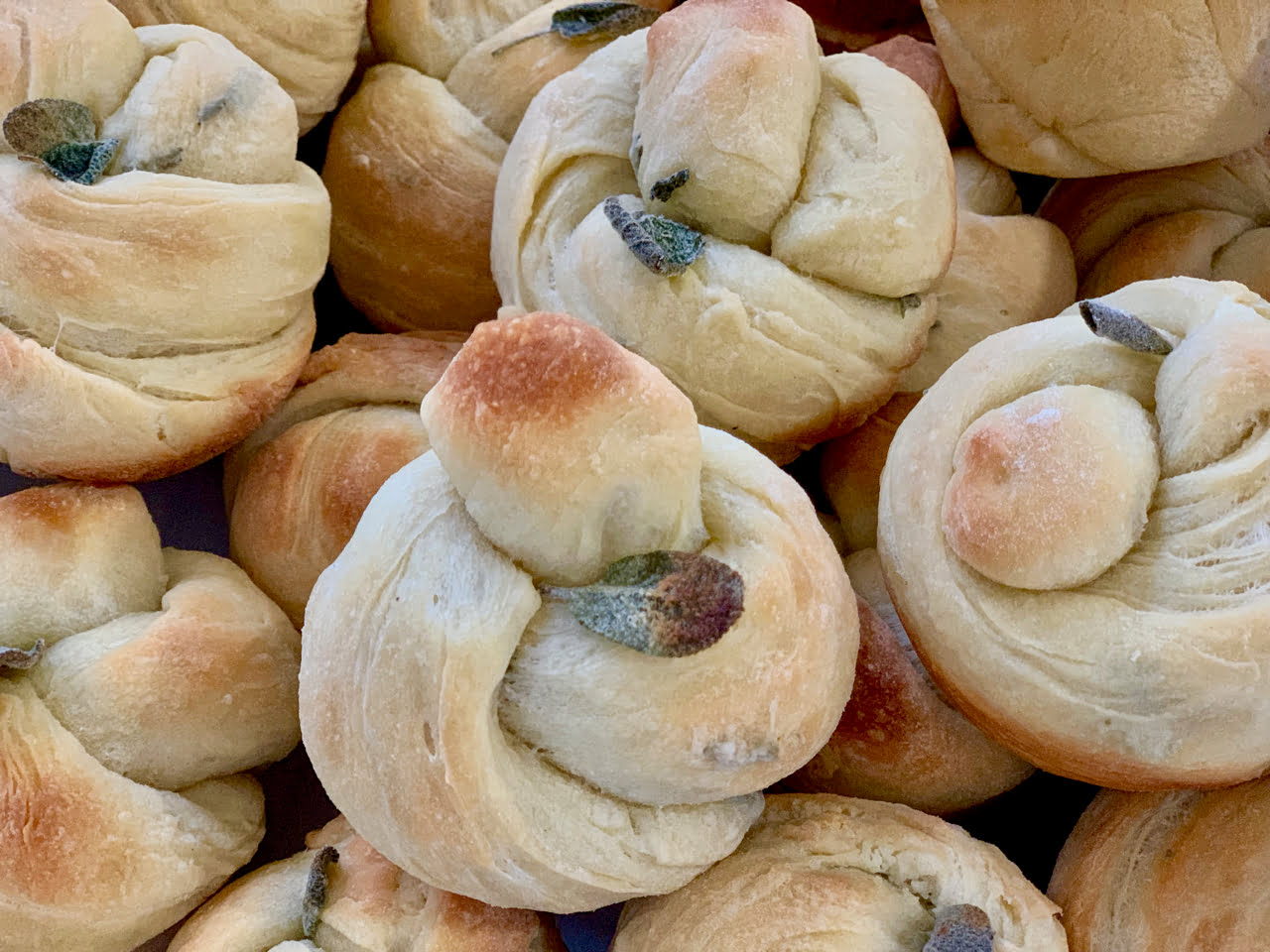Stress Relief Sage Rolls are all about the powerful healing aroma of sage, bundled into the ultimate comfort food; bread.
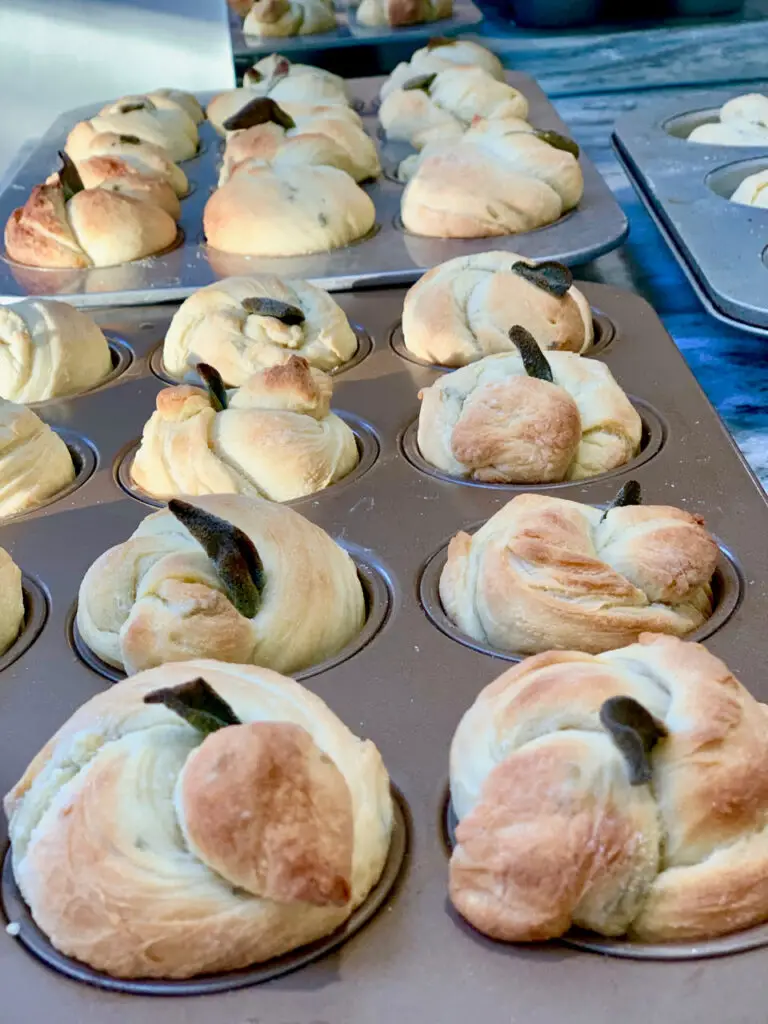
Sage
I am a GARDEN TO TABLE LIFESTYLE kinda gal!
Sage is a rather new and very welcome addition to my gardening, and rather easy to grow.
While it is in the mint family, it isn’t as intrusive as mint, which simply takes over.
I’ve become an avid grower of herbs for both cooking and medicinal properties, drying the leaves at the end of summer or bringing pots inside for the winter.
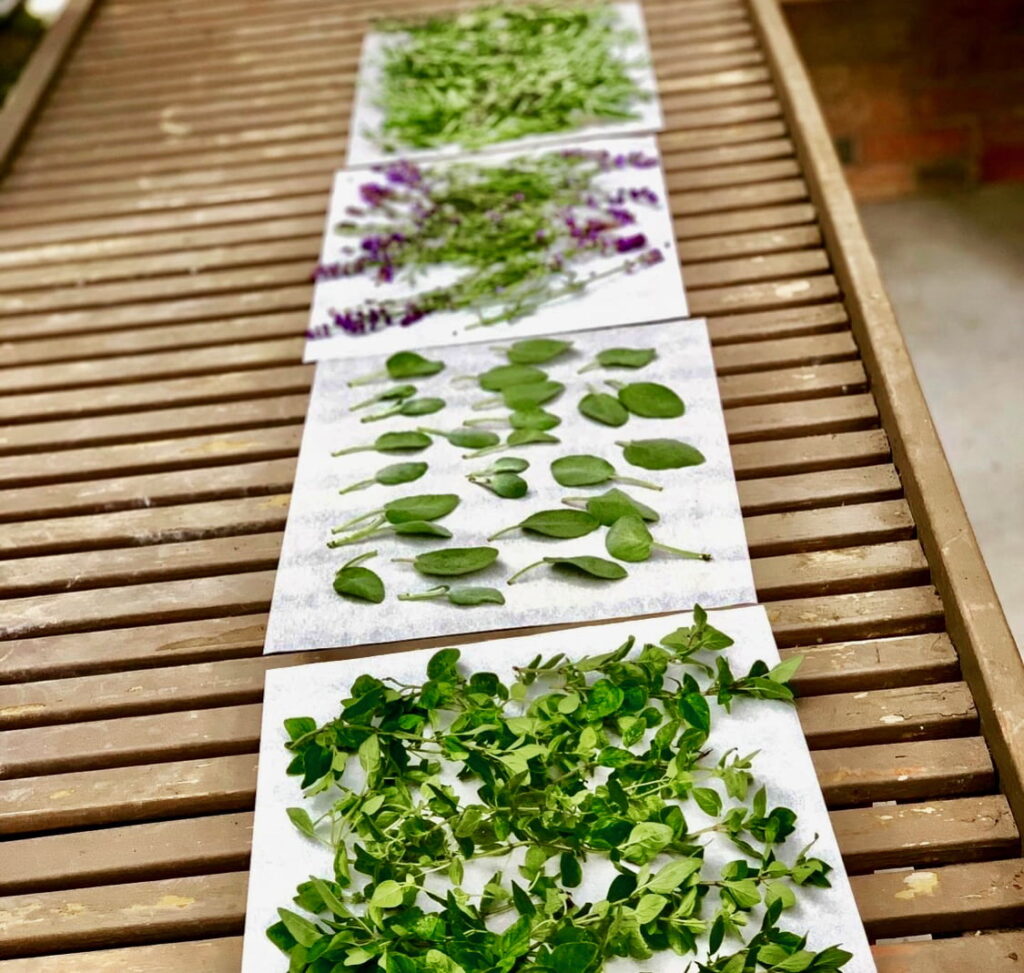
Stress Relief Sage
Whether you are burning a little mound of dried sage before a stressful event, or sipping on a cup of sage tea before bed; sage has a huge variety of health benefits.
If burning sage can actually change the composition in the air, linked to positive mood boost, think what it could do in the food we eat!
The Hearty Sage
This fuzzy leaf, evergreen plant seems more shy, unlike its cousin mint.
It grows happily, if the conditions are right, while I think mint could grow on a pile of rocks.
Oddly, sage doesn’t like intense sun but rather a slightly shady area with just a few hours of sun.
I learned this the hard way. Can you believe I am able to still find leaves in the dead of winter!
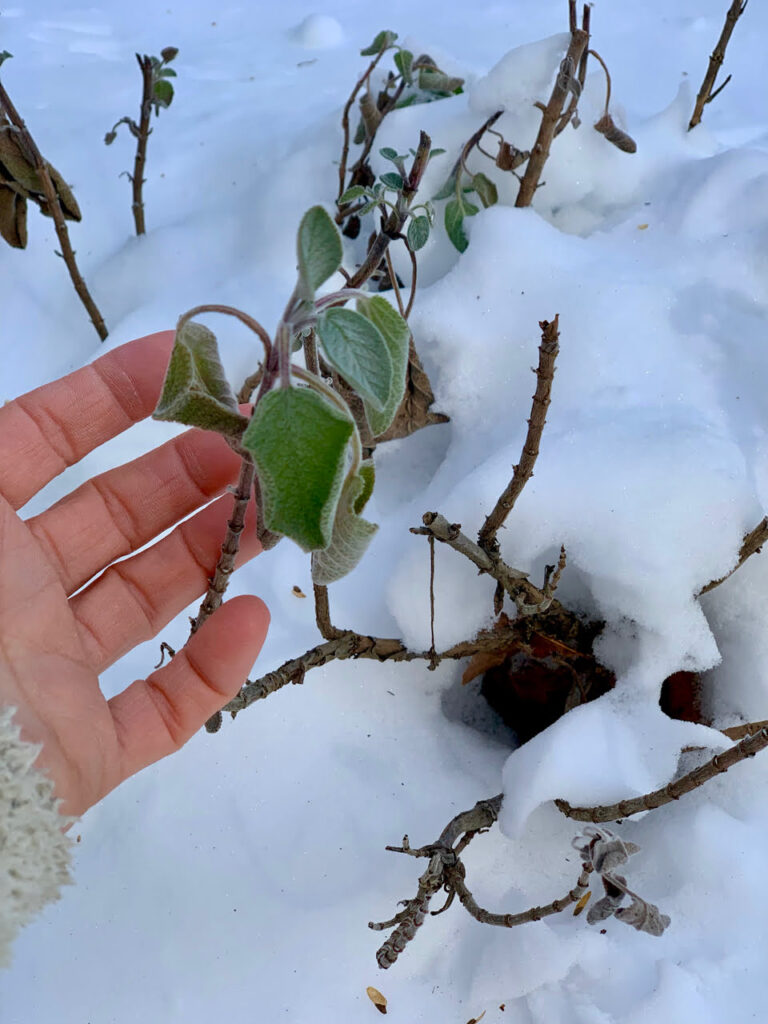
Cooking With Sage
The aromatic scent and flavor of sage compliments many dishes.
For me particularly, Sage Stuffing rolled in a turkey breast or stuffed inside of other poultry is my favorite way to enjoy sage.
While making my sage and bread stuffing one year, I realized what I loved most about the stuffing.
While the stuffing is also loaded with onions, celery, sometimes turkey thigh meat, it was actually the bread and the sage together, that make this stuffing fabulous.
For this reason, when I competed in The Great American Recipe, with PBS, I made my sage stuffing (Episode 7), for all America to enjoy on TV!

Yeast Bread Rolls Made With Sage
Having realized how delicious the pungent flavor of sage and the gentle flavor of a yeast bread tasted together, I decided it was time to create a yeast bread recipe folding in lots of finely chopped fresh sage into the dough.
The whole house smelled of this exotic aroma while the bread was baking and oddly, caused my mood to feel unusually calm from its smell.
And so there you have it; Stress Relief Sage Rolls!
Stress Relief Sage In Food
By now we’ve all heard of the use of burning a bundle of sage, in the four corners of the home?
This practice is done to ward off negative energy.
Consequently, and by sheer accident, after smelling the sage baking in the oven, I realized there is really something to this.
Apparently studies have been done proving that sage slows down the release of a type of enzyme that affects the balance of our mood in a negative way.
This then reduces a type of anxiety triggered from within.
Since there are also numerous health benefits from sage, literally from head to toe, I decided to indulge in a cup of sage tea daily.
The sage I use can be plucked fresh from the yard or windowsill pot, or dried at the end of its growing season to use all year.
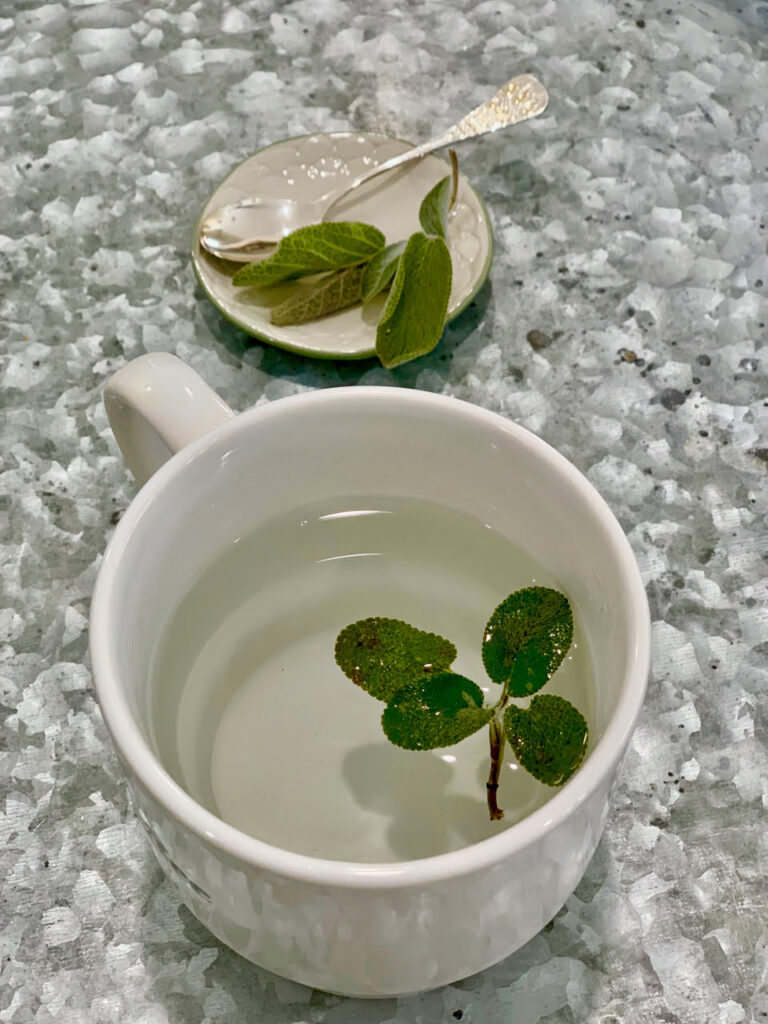
Every Bread Recipe Can Be Made Into Rolls
If you know me, you know I love making bread.
Nothing fancy, intense or elaborate, just a simple yeast bread that rises within an hour.
Should any of my other bread recipes spark an interest with you, just know they can each be made into rolls.
- Beetroot and Spinach Yeast Bread – Beetroot spinach bread braid is a delicious, healthy, showstopper of beetroot with garlic dough and spinach with lemon dough, braided together.
- Cranberry and Almond Yeast Bread – Cranberry almond yeast bread is made from fresh cranberries, crushed almonds, orange zest and cardamom, risen and baked into a beautiful bread!
- Spelt Potato Sandwich Bread – Easy spelt potato sandwich bread is an easy to rise, rustic yet dense bread, easily sliced into a sandwich bread.
- Pumpkin Pita Bread – Pumpkin pita bread recipe, is an elevated pita bread made with fresh pumpkin and walnut oil; a spectacular dipping bread for all our favorite Autumn Eats!
- Turkish Simit – So excited to share How To Make Turkish Simit Bread, my favorite bread rings, encrusted in sesame seeds and made from simple bread dough.
- Black Olive and Rosemary Bread – Black olive rosemary bread is the epitome of Mediterranean homemade bread with lots of olives, olive oil, rosemary and a sea salt crust.
- Stromboli or Pizza Dough – Stromboli Pizza Bites are both a pizza and a calzone, with everything you’d want on a pizza, rolled up inside a cheesy dough, baked to perfection. Think… Calzone!
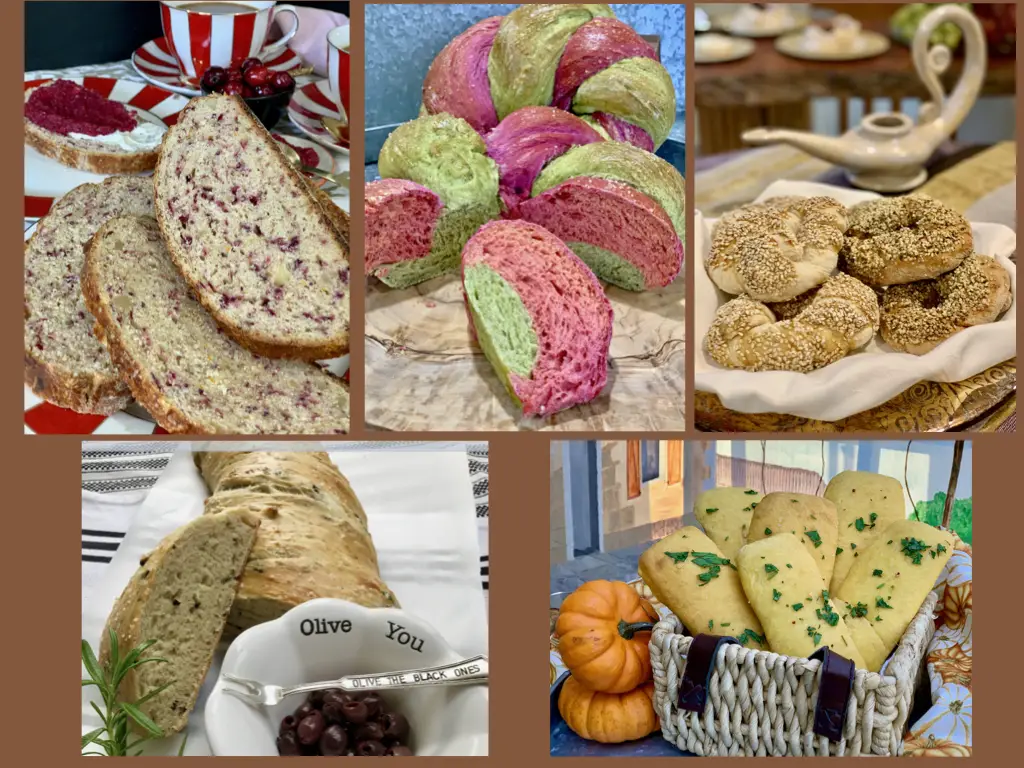
Bread makes everyone feel happy. From sandwich bread to dinner rolls, who doesn’t love bread.
The smell of bread baking is sometimes what will sell a house, says many real estate agents!
I had to create an easy yeast dough that would showcase the smell, taste and visual joy of the sage.
Making Sage Yeast Rolls – Step by Step
Step 1 – A simple mixture of yeast, a pinch of sugar and a little water, is all that’s needed to get this lovely dough mixture growing.
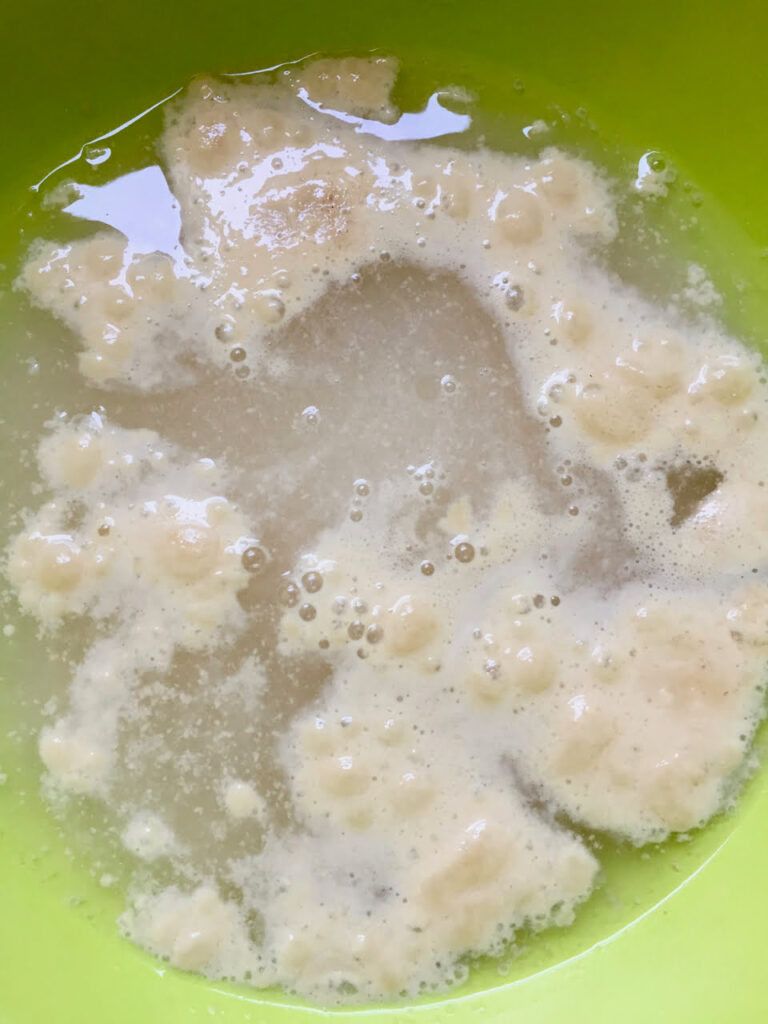
Step 2 – Flour gets folded in, until the dough is no longer sticky and forms an elastic dough ball that needs only an hour, in a cozy warm place, to double in size and be ready to bake.
Working the dough with your hands, adding flour as needed, allows you to feel when the dough is no longer sticky.
This means the appropriate amount of flour has been added.
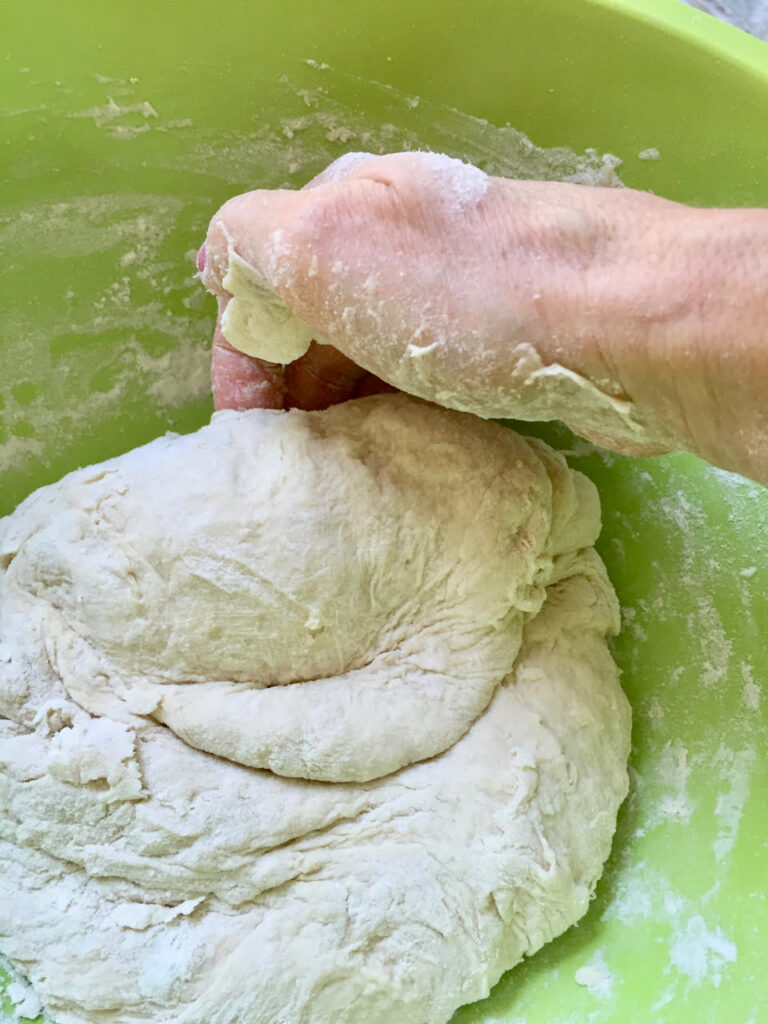
Step 3 – Once the dough rises, it is rolled out into a long log, cut into twenty-four pieces, rolled and twisted into a knot and left to rest for another thirty-minutes.
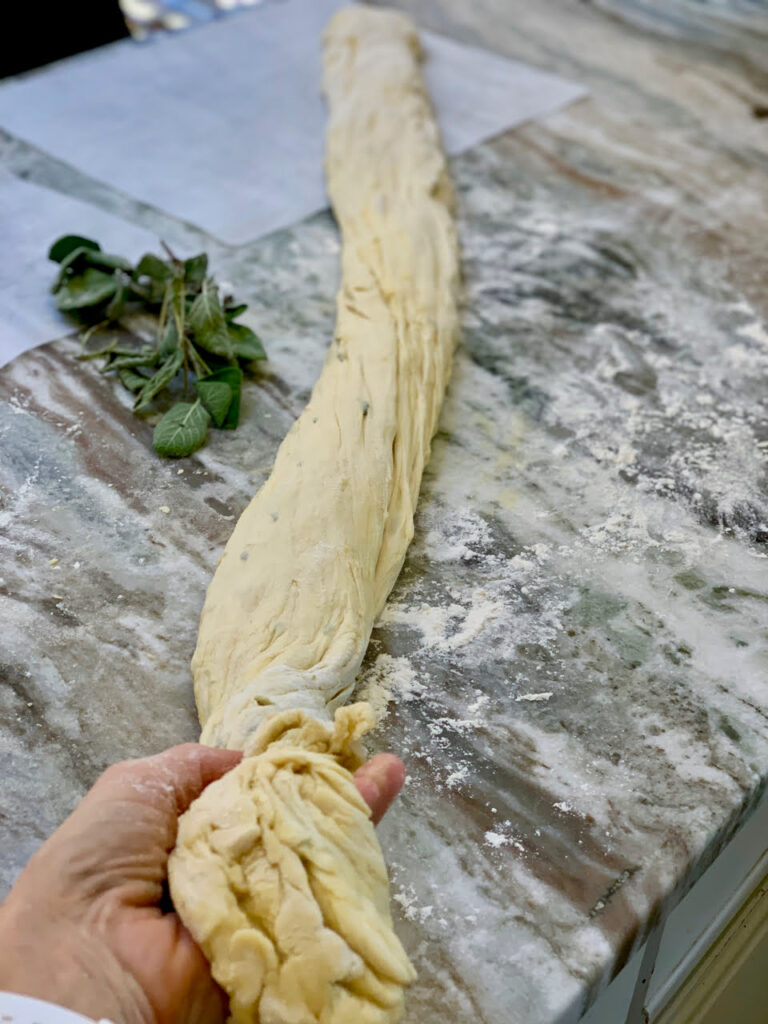
Step 4 – These lovely knots, with a sage leaf in the center of each, get brushed with a little egg wash, and baked to golden perfection in twenty-minutes.
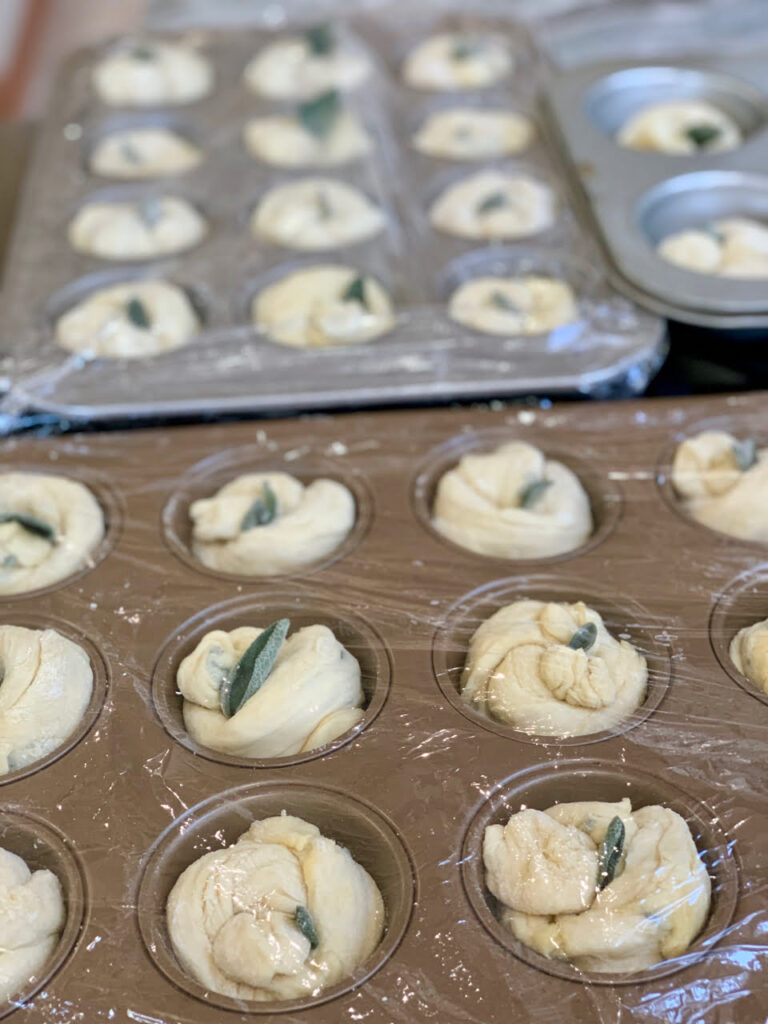
Ingredients Needed
- Yeast
- Sugar
- Water
- Salt
- Flour
- Olive oil
- Sage leaves
- Egg
Equipment Needed
- Large mixing bowl
- Wooden spoon
- T-Towel (to cover dough while rising)
- Muffin tin
- Basting brush
- Cutting board
- Chopping knife
- Measuring cup
- Measuring spoons
- Oven
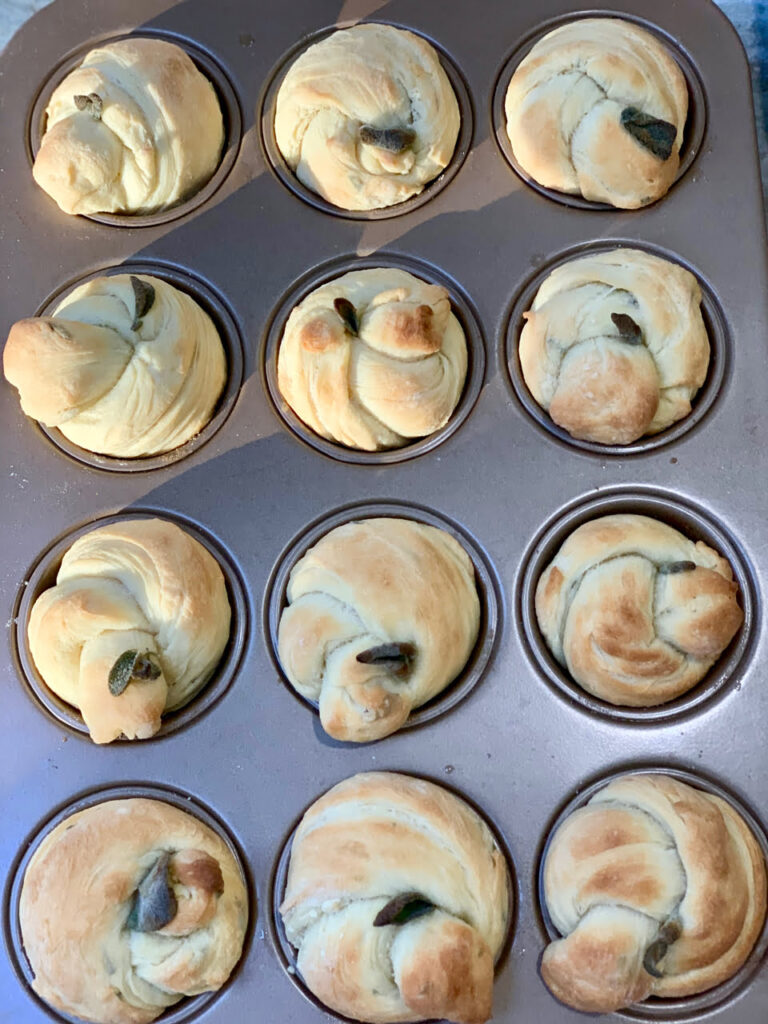
Stress Relief Sage Rolls
Equipment
- 2 Muffin tins
Ingredients
- 1 tbsp Yeast
- 1 tbsp Sugar
- 2 cups Water lukewarm
- 1 tbsp Salt
- 4-6 cups All purpose flour extra for shaping
- 1 tbsp Olive oil
- 1 bundle Sage leaves 2 tbsp finely chopped for the dough, 24 leaves per roll
- 1 Egg – for egg wash 1 egg plus 1 tbsp water, mixed
Instructions
- Mix the yeast, sugar and water together and let sit for 5-minutes to foam.
- Add the chopped sage leaves (reserving the 24 leaves for finishing), salt and slowly whisk in the flour a little at a time with a wooden spoon until it becomes firm enough to work with your hands. Continue adding flour until the dough is no longer sticking to your fingers.
- In a clean bowl, rubbed with olive oil, place the dough, cover and allow to sit in a warm (not hot), place for 1-hour.
- Preheat the oven to 400
- Flour a work surface and roll the risen dough out into a long log. Cut 24 equal size pieces of dough. Roll each piece out to about 6-inches and tie it into a knot. Place one sage leaf in the center of each knot. Transfer each knotted dough into a muffin tin (helps to hold its shape). Continue with the remaining dough.
- Brush the tops of the knotted rolls with egg wash. Allow to sit 30-minutes to rise a little more.
- Bake for 20 minutes.
Notes
- The muffin tins do not need to be oiled, since the baked rolls will pop right out.
